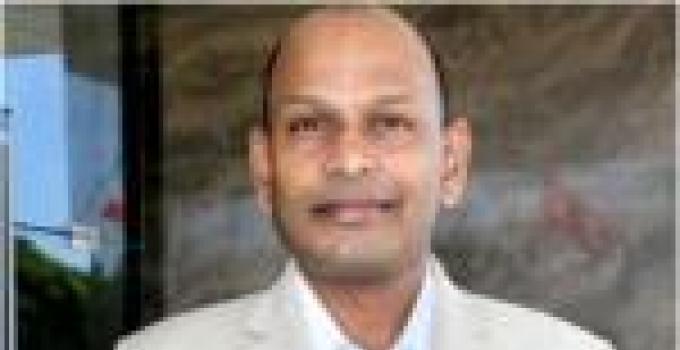Ireland risks missing out if it fails to invest in research at a high level, says a globally influential scientist
Prof Seeram Ramakrishna: ‘The view [in Singapore] is you have to look at the long term. You have to invest more to prepare for the future.
Maintaining a global vision and putting more money into science are essential for any country that wants to have an international impact on research and innovation. Ireland could be at risk of missing the boat if it fails to invest at a higher lever and abandons basic research in favour of research that delivers short-term returns.
Prof Seeram Ramakrishna understands the appeal of favouring investment in research that makes a financial return but this should not be the prime consideration when investing.
He is the professor of materials engineering and director of the Centre for Nanofibres & Nanotechnology at the National University of Singapore. He is also placed by citation-ranking company Thomson Reuters amongst the world’s most influential scientific minds.
He was on a visit to Dublin last week as a member of the scientific advisory board for Trinity College Dublin’ s Advanced Materials and BioEngineering Research Centre, Amber.
Singapore has become a powerhouse of research and innovation and Ireland was also well placed to have an impact that is disproportionate to its size, Prof Ramakrishna believes. And comparisons are often made between the two countries.
“Ireland and Singapore have many commonalities, a similar population, similar type of economy with multinationals supported by small to medium enterprises along with high quality educational institutions with connectivity to local centres of excellence,” he says. “We have similar corporate tax structures,” he adds.
It was not always so. His country had a slow build to reach its current high research intensity. “We felt we needed to innovate so we went to the multinationals and asked what they would need, high quality manpower, access to international markets and a good environment to operate, for example power facilities and a stable financial system.”
Singapore then looked to see how it might invest to build its research and innovation capacity. Higher education was an early target for funding.
The country had one university through the 1970s, a second was built in the 1980s and another in the 1990s and now it has five, one per one million in population, he says.
Internationalisation became a key theme. “We took internationalisation very seriously, attracting faculty members from abroad, international students and research partnerships with universities and industries outside Singapore. We have been pursuing this for the past 10 years,” he says.
“We also kept our eye on global excellence from the start. We think we have to do things in a global way, meaning global benchmarks and global standards. And we invested quite a bit in this. Typically we are investing 2.7 to three per cent of GDP in research and that translates into a high research intensity.”
Ireland spends 1.4 to 1.6 per cent of GDP in research.
Funding poured into PhD and graduate education. “We ran programmes at home but also wanted to send students abroad and offered scholarships for 1,000 students to get their PhDs abroad,” he says. “It is part of our effort to keep the pipeline of graduates strong.”
The government also prioritised research, taking a whole- of-government approach with management of the national research effort set at prime minister level, he adds. “The prime minister’s office chairs the meetings at cabinet looking at all aspects of science and innovation.”
The idea of reducing research investment was never considered. “Singapore is primarily an export economy. The view is you have to look at the long term. You have to invest more to prepare for the future,” says Prof Ramakrishna.
The national policy protects blue skies research but also supports applied and orientated research, he says. “We provide opportunities for both. It comes down to money but you need a broad approach.”
Government policy here has emphasised the orientated side of this mix.
“I can understand why it happened. The last few years in the EU the top 20 countries doing research there is a move towards mission-oriented research and there has been a bit too much of a swing in that direction. But Ireland should look at a future world scenario,” he argues.
Singapore and Japan had announced a move towards smart cities and green cities, projects that required “out-of-the-box thinking. These things are happening, but three years go people weren’t talking about them”.
This represented an opportunity. “Ireland should build momentum and try and catch that wave,” he says.
Ireland needed to increase its population of PhDs to keep its pipeline topped up with fresh minds. “That is the source of new innovations.”
He also questioned the balance of investment in research. “Your research is focused on centres of excellence, but the rest of the higher education system is short in terms of investment.
It was also important that the universities be able to pursue blue skies research, as was the case in Singapore, with mission oriented research being tackled by a number of national institutes.
He felt there was a risk for Ireland if it continued to place such an emphasis on orientated research. “Ireland is a manufacturing economy so who are your competitors? China is very strong in this area and they are the competition. How do you stay ahead of this competition? Have strong, cutting- edge innovation. Ireland has to be careful in that area, it is necessary for maintaining a competitive edge and for future survival.”

